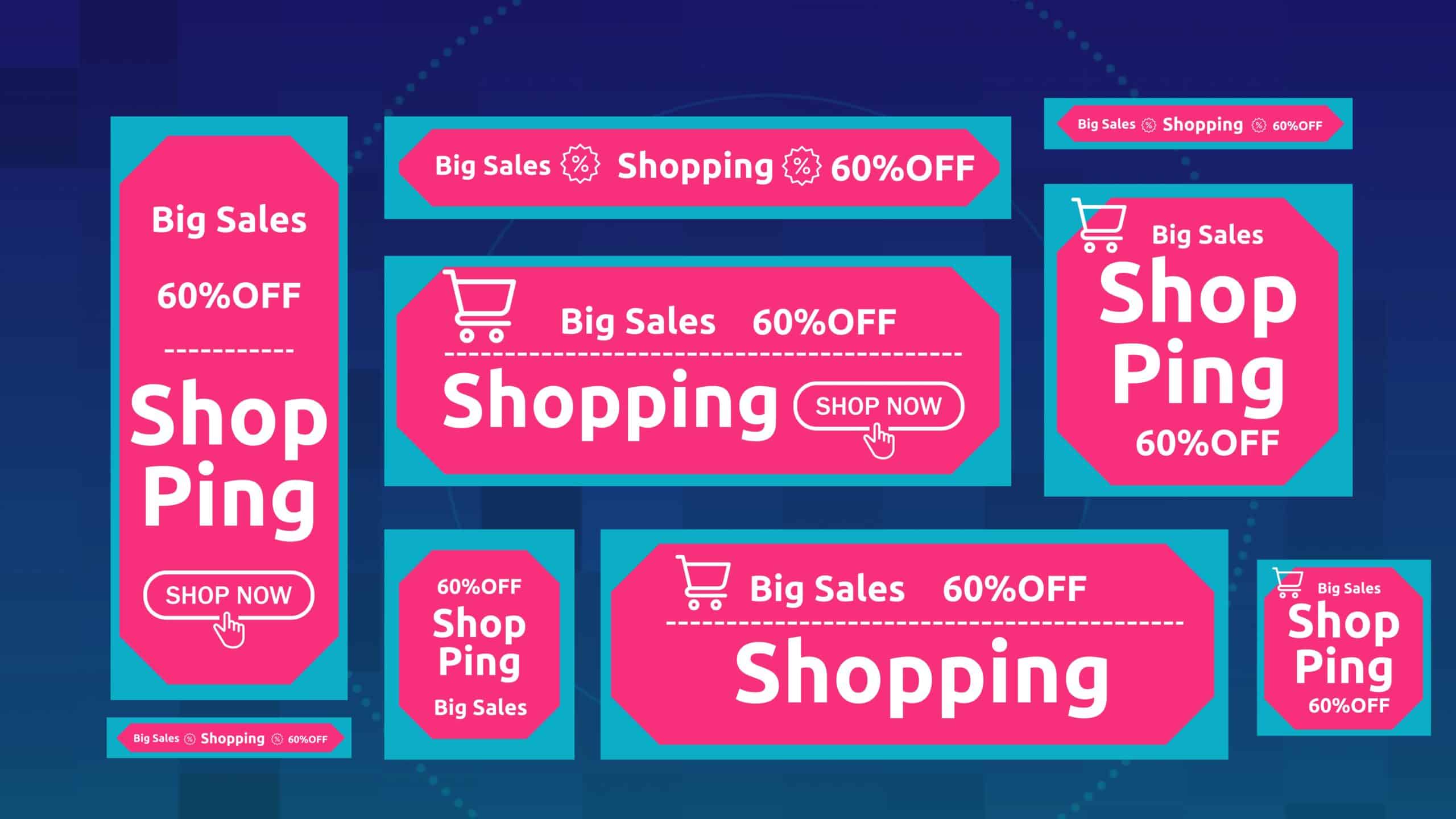Context
For the last 18 months, L-Banners, displayed alongside CTV content, have gained momentum to offer, at once, a new source of inventory for advertisers and publishers, as well as a less interruptive ad experience for viewers.
These new formats clearly aligned with the will of the Streaming Ad industry not only to bring video ads from the legacy TV area, but also to profit from digital capabilities and innovations.
Broadpeak has followed this trend and introduced BannersIn2, an insertion solution that is :
- Integrated with its existing SSAI solution, providing an easy path to upgrade with no need for an additional proprietary custom solution
- Developed on top of SIMID, the IAB standard for innovative ad formats, offering a scalable solution to all CTV environments, with client-side impression-level tracking and personalization
- Connected to any Ad Servers and SSPs, both in direct sold and programmatic
BannersIn2 is now fully developed, and its first deployments are scheduled for this year at broadcasters, streamers, and operators worldwide.
Going one step further: AI-powered CTV advertising
Today, Broadpeak and Intel go one step further upstream in the ad tech stack by demonstrating a first prototype of advanced Agentic Scene Level Targeting. The two companies are leveraging the power of Gen AI and Intel’s deep expertise in AI platform design to streamline the eventual operations of super-contextual branding L-Banner campaigns.
While many are still exploring far fetched ideas to use the power of LLMs and text-2-image/video capabilities, Intel and Broadpeak led a product discovery work in the last couple of months to combine deep -AI technical expertise of Intel and advertising market and tech intelligence from Broadpeak.
The goal was to harness the power of agents to understand and retrieve information beyond human intuition, while simplifying the task of creating a banner campaign.
Solution
Powered by an integration between Intel’s AI-based Data Curation Reference Framework and broadpeak.io, the Agent is working in a multi-step process.
First, the Agent is trained on all the publisher’s videos to build an understanding of the assets, based on audio, video, and text recognition, stored in the RAG system (as shown in the Intel schema).
We utilize the prototype of an advanced framework developed by Intel, which combines multiple steps and different types of models to make recognition usable by LLMs.
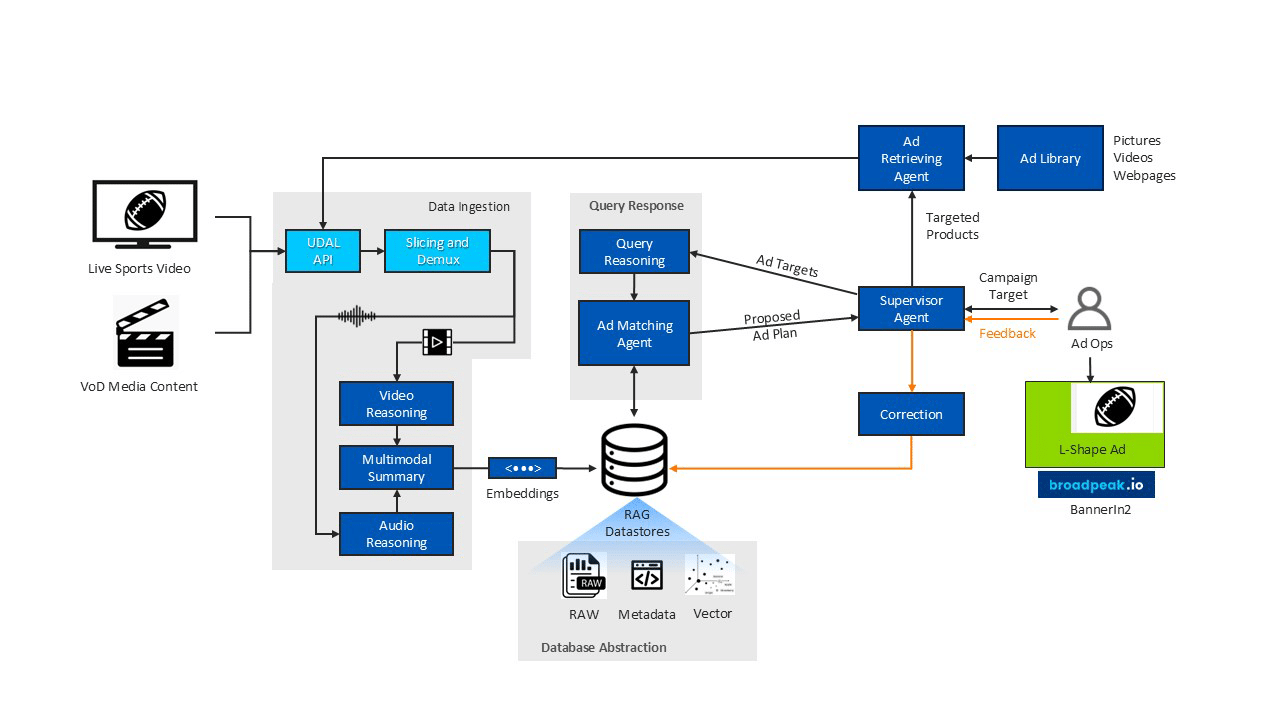
(Dynamic Ad Insertion Use Case)
Once trained, the Publisher Ad Op can just input the product URL in the Agent.
From the Product URL, the Agent will:
- Fetch the content of the page to understand, through its reasoning, LLM, what the product is about
- Generate one (or many) L-Banners creatives
The Ad Ops can control the understanding of the model, highlighting the key characteristics of the product and the quality of the Banner, which can be validated with the advertiser.
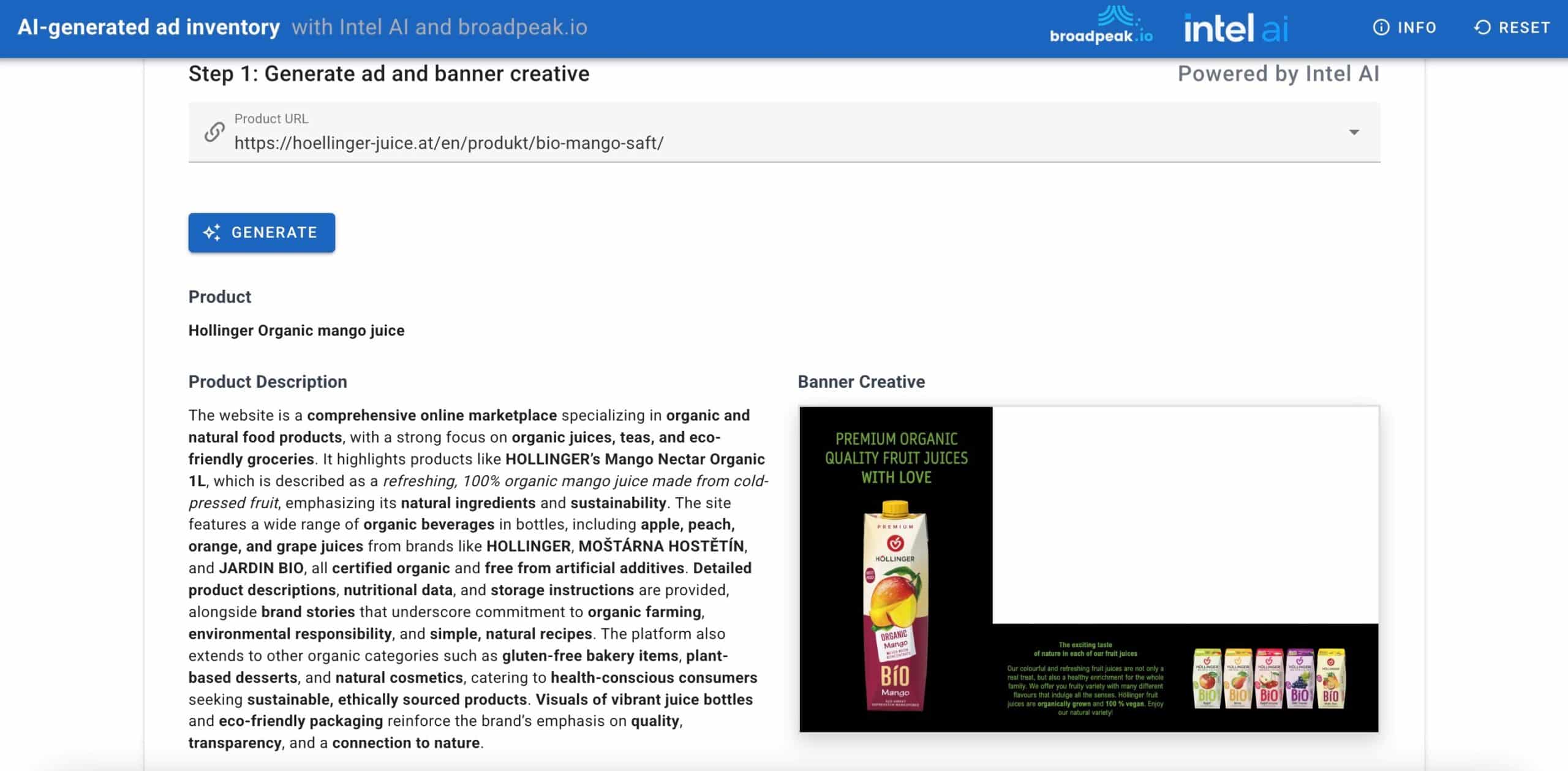
Once the agent understands the product and creates the Banner, the Ad Ops can select the videos in which the agent will look for contextually relevant placements.
The LLM agent will then automatically match its knowledge of the product with its understanding of the videos and propose a list of placements.
From this list, the Ad Op will select the scenes they want to keep for the campaign (and, one day, trust fully the Agent’s recommendations).
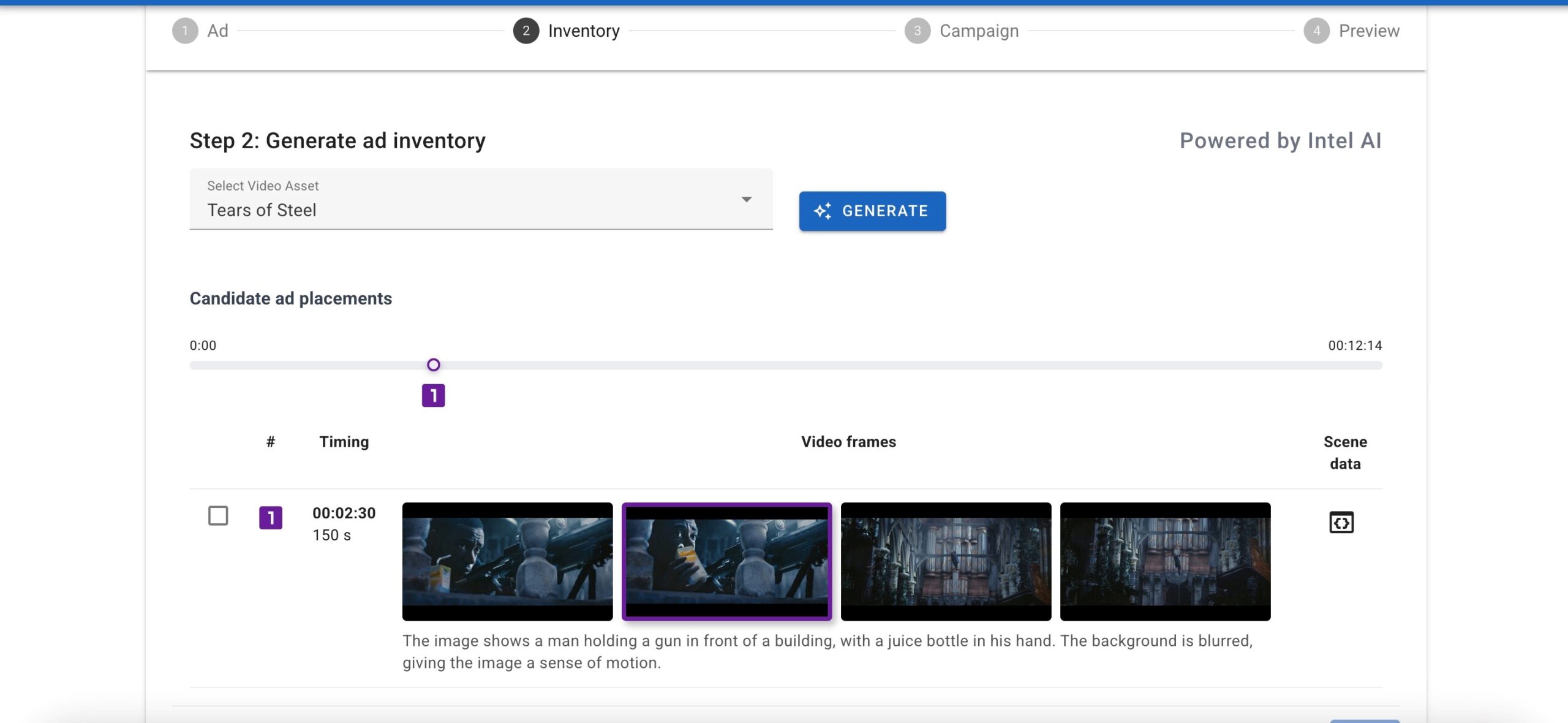
Once the list is defined, after picking up the duration of the banner’s display, the Ad Ops can automatically, in a single click, send the campaign’s placements cue points and banner creative to the Ad Server and broadpeak.io API at once.

The Ad Op can also preview the result to share it with the advertiser.
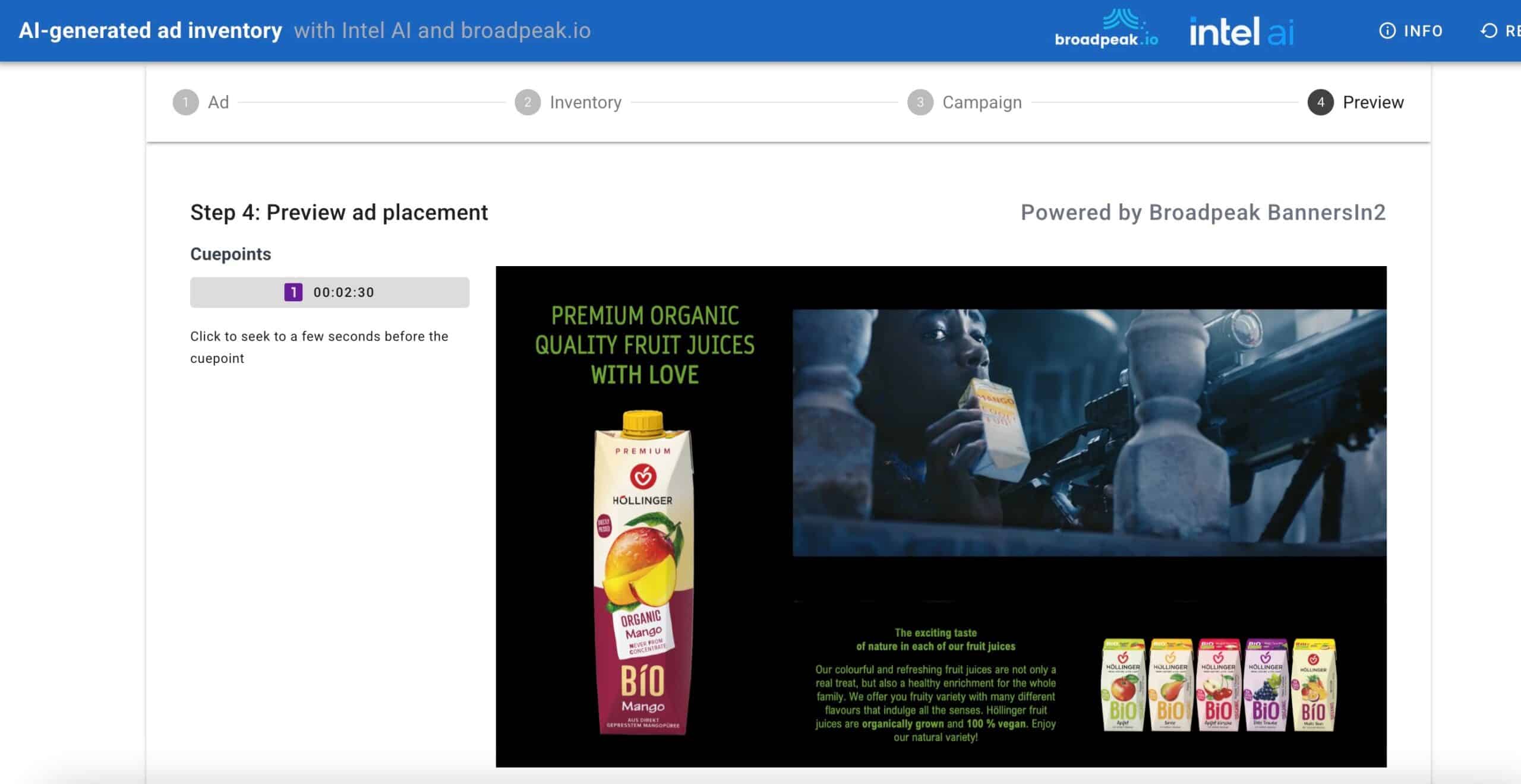
Value proposition
Working at scale, this solution reduces the costs of placing inventory opportunities (especially with the increase in content). It increases the relevance of placements at the scene level, multiplying the opportunities beyond app-level, channel-level, or show-level targeting.
This “from advertiser to content” solution will be especially tailored to sponsorships and cost-per-day campaigns for major product launches, where large brand advertisers seek the most extensive yet memorable reach possible.
It will also help to scale CTV advertising to many SMBs. These companies, with limited resources, will need to provide a product URL to be displayed on the big screen.
And, obviously, this will also integrate the award-winning Broadpeak Click2® for lower-funnel performance initiatives.
The solution has been showcased on Broadpeak booth and at the IABM Innovation Arena at IBC 2025.
More information on Intel’s AI-Based Data Curation Framework can be found HERE.
